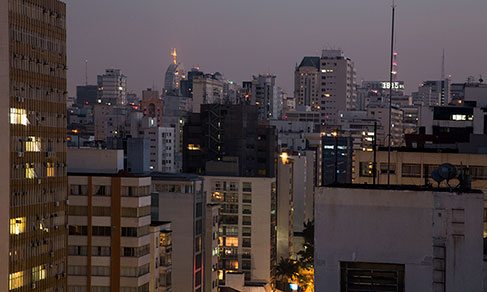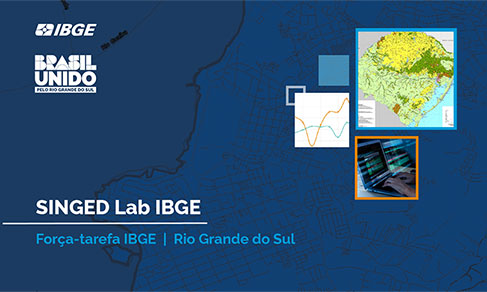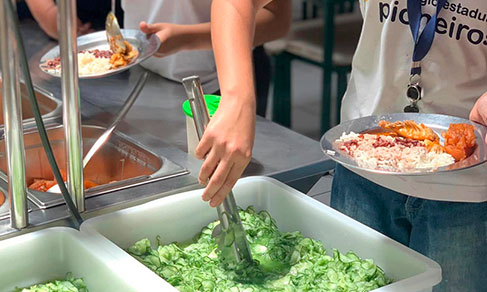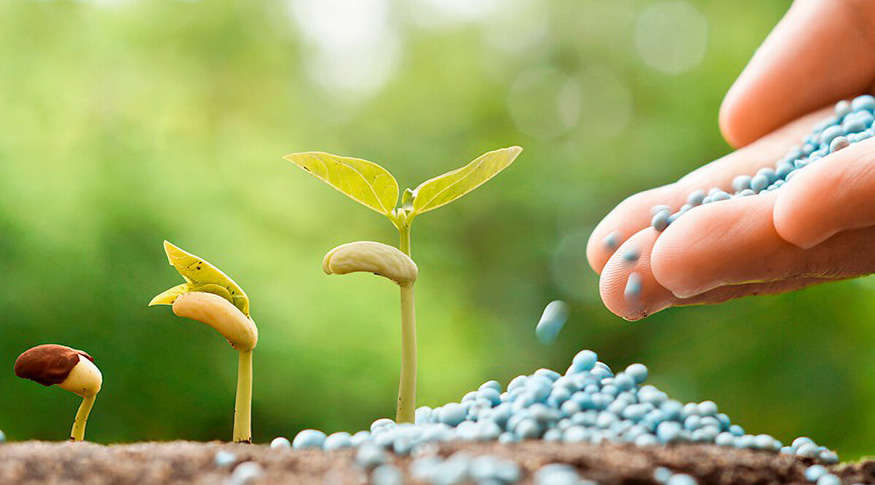PPM
Herds and value of products of animal origin hit record in 2022
September 21, 2023 10h00 AM | Last Updated: September 22, 2023 01h52 PM
Highlights
- The production value of all products of animal origin surveyed by the 2022 Municipal Livestock Survey reached R$116.3 billion, and 7.4% (or R$8.6 billion) of this value came from aquaculture. Compared to the previous year, the increase was 17.5%.
- Milk accounted for 68.8% of the production value of R$116.3 billion, or R$80.0 billion. Cow's milk production fell 1.6% in the year, reaching 34.6 billion liters. The leadership remains with Castro (PR), with 426.6 million liters.
- With an increase of 4.3%, the country's cattle herd broke a record in the time series, which began in 1974, and reached 234.4 million heads of cattle. The municipality of São Felix do Xingu (PA) had the largest cattle herd in the country (2.5 million head).
- The herd of hogs and pigs grew 4.3%, reaching a record 44.4 million animals. More than half of this herd is in the South Region (23 million). The municipality with the largest herd is Toledo (PR), with 909.9 thousand head.
- Chicken egg production grew 1.3% and reached a new record, with 4.9 billion dozen. The municipality of Santa Maria de Jetibá (ES) leads, with 318.6 million dozens.
- Honey production increased by 9.5% annually, reaching a record of 61.0 thousand tonnes.
- The leading municipality was Arapoti (PR), with 991.7 tonnes of honey.
- Fish production reached the highest level in the series, with 617.3 thousand tonnes and R$5.7 billion in production value. Nova Aurora (PR) maintains the leadership, with 24.4 thousand tonnes, or 4.0% of national production.
- Tilapia is the leading species in fish farming, representing 60.8% (R$3.5 billion) of the value of fish production. The largest tilapia producer was Nova Aurora (PR), with 24.4 thousand tonnes and R$190.0 million in production value.

In 2022, the cattle herd grew for the fourth consecutive year and reached a new record in the time series, according to the Municipal Livestock Survey (PPM), released today (21) by the IBGE. Growth of 4.3% brought the number of heads to 234.4 million.
“Cattle production has been increasing since 2019, due to good prices for arroba and live calves. There was a process of retaining females for reproduction, due to more attractive prices. We still have in 2022, a consequence of this behavior that began at the end of 2019. But the expectation is that the rise in prices will have ended in 2022, when we also observe an increase in the slaughter of females”, points out Mariana Oliveira, analyst at PPM .
All animal herds showed growth, with the exception of quails (-8.2%). Cattle herds, as well as that of hogs and pigs increased by 4.3% each; that of buffaloes, 3.0%; horses, 0.9%; goats, 3.9%; sheep, 4.7%; poultry, 3.8%; and chickens, 2.4%. There was also a record in the production of honey, which grew 9.5%, and hen eggs with an increase of 1.3%.
“With a weakened domestic demand and reduced purchasing power of the population, the export of livestock products, especially meat, was the alternative adopted to make production flow. Exports reached a record and China has strengthened its position as an important market for meat: chicken, pork or beef”, analyzes Mariana Oliveira.
Cattle grew in all Major Regions in 2022
Cattle herds grew in all Major Regions in 2022. Mato Grosso leads with 34.2 million head, or 14.6% of the national herd. Next comes Pará (10.6%), surpassing Goiás (10.4%). In the municipal ranking, São Félix do Xingu (PA) maintained its leadership, reaching 2.5 million head.
Value of livestock production grows 17.5% and reaches R$116.3 billion
The production value of all livestock products investigated in the survey, including those from aquaculture, reached R$116.3 billion, meaning an increase of 17.5%. Milk production accounted for 68.8% of this value, followed by hen egg production (22.4%). In the municipal ranking, considering the six main products (milk, hen eggs, quail eggs, honey, wool and silkworm cocoons), Santa Maria de Jetibá (ES) presented the highest production value, with R$ 1.6 billion, of which 95.0% comes from the trade of hen eggs, a product with which it leads the ranking. Castro (PR) took second place with R$1.2 billion, 98.7% coming from milk production. Bastos (SP) closes the TOP3, being the second largest national producer of hen eggs.
Milk production falls 1.6% and average price hits the series’ highest value
Milk production was estimated at 34.6 billion liters in 2022, a reduction of 1.6%. Production has been decreasing since 2020, when it reached a series record (35.3 billion liters). Rising costs and reduced margins have discouraged production. The number of milked cows fell by 1% and represented 6.7% of the total number of cattle in 2022, which may indicate disinvestment in milk production - we observed that producers are migrating or leasing land for the production of grains, such as soybeans, stimulated by high grain prices in recent years.
Milk prices rose 19.7% and corroborate this information by maintaining a cumulative increase since 2017 and closing 2022 at R$2.31 per liter, the highest value in the series. “As a result, even with the drop in volume, the value of milk production increased by 17.7% to R$80.0 billion”, highlights the survey analyst.
Among the Major Regions, the South maintained its regained leadership in 2021, with a share of 33.8%, followed closely by the Southeast with 33.6%. Contrary to the other regions, which showed declines, the Northeast, the third largest national producer (16.5%) since 2017, has been increasing its production. This growth is mainly the result of favorable weather conditions in the Region in recent years and investments in genetics and technology. Minas Gerais maintained the highest production, with 27.1% of the total or 9.4 billion liters. Among the municipalities, Castro (PR) remains the leader, with 426.6 million liters. Carambeí (PR) came in second place, with 255.6 million liters. It is worth noting that six of the ten main municipalities in milk production were from Minas Gerais and three from Paraná.
Farming of poultry and hogs and pigs breaks record
The herd of hogs and pigs grew 4.3% in 2022, reaching a record 44.4 million animals. The South Region brings together 51.9% of the national workforce. With African Swine Fever in China, the growth of the herds of sows and hogs and pigs was stimulated, and we now have China as the main destination for our meat exports.
Furthermore, associations linked to the sector have been working to reduce bottlenecks in domestic pork consumption, introducing new portions and easier preparations, and national per capita consumption has been growing.
The poultry inventory rose 3.8%, also reaching a record of 1.6 billion animals, with highlights to Paraná with 470.3 million (29.7%). The South Region leads with 49.3%. Brazil is the world's largest exporter of chickens, and the South Region, led by Paraná, concentrates most of Brazil's chicken slaughter. In 2022, Brazil saw increases in slaughter and exports, the latter influenced by cases of avian influenza in the main chicken producing countries, as Brazil is free of the disease.
Cascavel (PR), in 2021 and 2022, maintained the largest quantity of poultry in the country (21.1 million head), now followed by Itaberaí (GO), with 16.2 million poultry, and by Santa Maria de Jetibá (ES), with 15.7 million poultry, of which 13.0 million are chickens, the largest number in the country.
Chiken farming grew 2.4% and reached 259.5 million
The national number of chickens in 2022 reached 259.5 million and the Southeast was responsible for 35.1% of this total, or 91.2 million animals. Among the Federation Units, São Paulo leads, with 21.2% of the national total of chickens. Santa Maria de Jetibá (ES), with 13.0 million chickens, has the largest herd in the country, followed by Bastos (SP), with 11.0 million and Primavera do Leste (MT) with 4.3 million chickens.
Hen egg production rose 1.3% to a record 4.9 billion dozen. The Southeast stands out with 39.9%, followed by the South with 23.1% and the Northeast with 19.6%. Eggs, for many years treated as villains, are now recognized as a healthy product. The more affordable price also influences a growing demand for this protein, leading to successive records in production collected in the survey. Part of these eggs are also destined for incubation and become broiler chickens, an activity that was also expanding in 2022.
Fish and shrimp farming hit production and value redcords
National fish production reached a new record of 617.3 thousand tonnes. The activity continues to rise sharply in the country, with a highlight to tilapia production, which represented 66.1% of the total fish produced. The total production value also increased (16.4%), reaching R$5.7 billion. Paraná, the largest fish farmer, accounted for 27.1% of the national production and 75.7% in the South Region. Rondônia appeared in second, having stood out in the farming of round fish.
Shrimp farming was 113.3 thousand tonnes, an increase of 5.9% compared to the previous year. The sector has maintained an increasing pace since 2017, with the recovery from the effects of the white spot. Production is concentrated in the Northeast of the country (99.6%), with Ceará, Rio Grande do Norte and Paraíba standing out, with 54.1%, 22.2% and 6.4% of production, respectively. Aracati (CE) led the ranking of municipalities, with production of 12.7 thousand tonnes or 11.2% of national production.




















